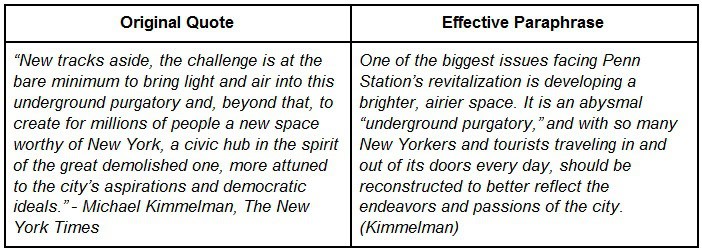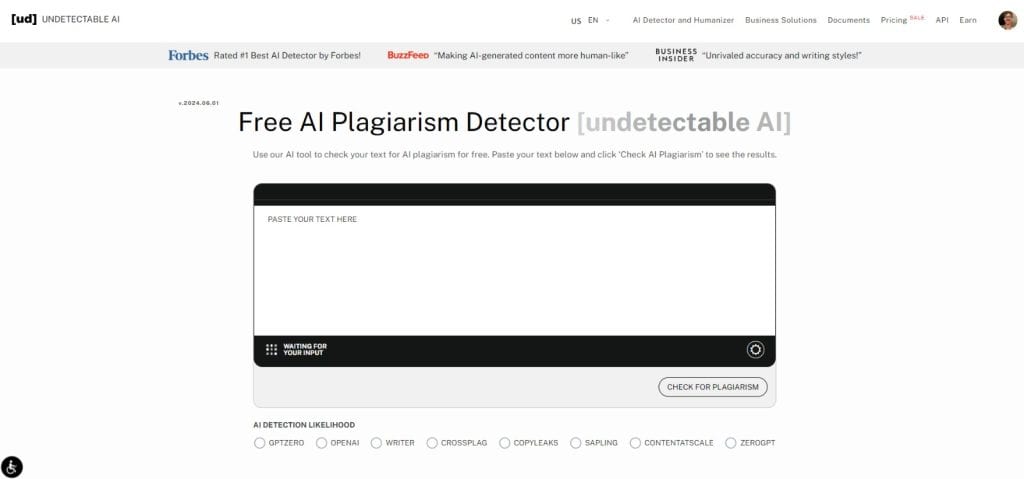You’re deep into writing your paper. You’ve already gotten your points across by shortening your sentences.
You might have even used an AI essay writer to streamline the process and sidestep the dreaded creative block.
But the big question here is: Are you sure everything is cited properly? It might seem like a no-brainer, but citing sources incorrectly is much more common than you’d think.
More than six out of ten students aren’t confident in their ability to reference sources correctly.
One effective way to incorporate your essay’s sources is through paraphrasing. It allows you to reference ideas from other sources in your own words.
Just keep in mind that it still requires that you mention the original author.
When done right, it can strengthen your paper and keep you clear of plagiarism issues.
To help you figure out this skill, here’s our guide on how to paraphrase in an essay to ensure that your work is accurate, polished, and properly cited.
What Is Paraphrasing?
Paraphrasing is when you rephrase someone else’s ideas in your own words.
Unlike quoting, where you use the exact wording from the source, paraphrasing lets you capture the essence of the source material with a fresh spin.
It is widely used in academic writing, journalism, and even business communications to convey ideas without copying them directly.


Never Worry About AI Detecting Your Texts Again. Undetectable AI Can Help You:
- Make your AI assisted writing appear human-like.
- Bypass all major AI detection tools with just one click.
- Use AI safely and confidently in school and work.
Researchers, students, and writers can all use paraphrasing to avoid plagiarism, add clarity, and integrate complex ideas naturally into their work.
Knowing how to properly paraphrase also means that you understand the original meaning of the source and can express it in a new way.
It means maintaining the integrity of the original message while giving it a personalized touch. It’s an essential skill for any writer looking to cite sources accurately and responsibly.
When to Use Paraphrasing in Your Essay
Understanding how to paraphrase in an essay can make your writing clearer. Here are a few situations where paraphrasing is really effective:
- Clarifying Complex Ideas: If the original text is difficult to understand, paraphrasing allows you to simplify it. It makes your version easier for your readers to grasp.
- Blending Ideas into Your Own Voice: By paraphrasing, you can include other sources naturally within your argument and maintain a consistent tone throughout your essay.
- Avoiding Overuse of Quotes: Too many direct quotes can overwhelm your readers and make your paper feel disjointed. Paraphrasing lets you incorporate your sources more seamlessly.
- Summarizing Key Points: When you need to focus on the main idea rather than the exact wording, paraphrasing can condense the information effectively.
Use paraphrasing to add variety, reduce excessive quotations, and keep your paper’s style consistent. In turn, this strengthens your voice and keeps your work grounded in original thought.
How to Paraphrase in 5 Easy Steps

Just imagine how it would feel to see your work get plagiarized.
That’s what happens when paraphrasing and citations, in general, are done poorly. It also leads to accidental plagiarism and misrepresentation of ideas.
Proper paraphrasing is about respecting the original author’s work while making their ideas your own in a clear and ethical way. Follow these steps and learn how to paraphrase in an essay properly:
1. Understand the Original Text

Source: DRAW – Digital Repository for Academic Writing
Start by reading the original material carefully. Take your time understanding the source’s meaning. Paraphrasing requires you to capture the author’s intent and core message.
Try summarizing the main idea in your own words without looking at the text. If you can explain it simply, it shows that you understand it well enough to paraphrase it accurately.
2. Highlight Key Points and Ideas
Identify the most important concepts or ideas in the text. Make sure you highlight these core points to help focus on what needs to be conveyed.
This also means leaving out the unnecessary details that might lead to unintentional copying.
This step ensures that when you paraphrase, you’re focusing more on the author’s main ideas and not accidentally reproducing their exact words or structure.
3. Reword Using Synonyms and New Structure
Once you understand the original message, rewrite the text using different words and sentence structures. Replace the keywords with synonyms, but make sure that the meaning stays the same.
Go beyond just simple word swaps. Consider reorganizing the sentence or presenting the idea in a new way.
Think about the core message, then structure your sentences to make them distinct from the original. Capture the essence without mirroring the style or wording.
4. Compare Your Paraphrase with the Original
Once you’ve written the paraphrased work, set it side-by-side with the original text. Check carefully to see if you haven’t unintentionally copied any phrases or kept the original structure.
A good paraphrase should feel unique but convey the same meaning. Reviewing your work this way catches any accidental similarities and ensures that your version is entirely your own.
5. Cite the Source Properly
Finally, always include the original source, even if you’ve completely rewritten the content. Paraphrasing still involves using someone else’s ideas, so proper citation gives credit where it’s due.
Not citing can lead to plagiarism, which has serious consequences in academic and professional settings.
Citing sources also reinforces your integrity as a writer and shows respect for the work you’ve referenced.
How to Cite a Paraphrased Source
It’s essential to know how to properly paraphrase to give credit to the original author and maintain your credibility.
Here are some tips to ensure that your paraphrased citations are on point:
- Follow Citation Style: Use the required citation style for your paper, whether it’s APA, MLA, or another format. Each style has specific guidelines for in-text citations.
- Include Author and Date: Mention the author’s last name and publication year (or page number, if required) directly after the paraphrased section.
- Avoid Multiple Paraphrases Without Citation: Don’t paraphrase several ideas from the same source without citing each one. It could look like unintentional plagiarism.
Even though paraphrasing puts ideas into your own words, remember you’re still referencing someone else’s work. Citation is always a must.
Paraphrasing vs. Quoting: Key Differences
Paraphrasing and quoting both make citing sources easier. They help incorporate sources into your essay but are used in different ways.
Paraphrasing, as we’ve covered, rewords the original text in your own words to convey the same idea without directly copying.
It allows you to fit the information naturally into your writing style and helps avoid an overreliance on direct quotes.
In contrast, quoting uses the exact words from a source. It’s typically used when the phrasing is so powerful or precise that changing it wouldn’t effectively convey the same impact.
Paraphrasing adds flow and originality to your writing while quoting maintains the integrity of essential statements. It creates a well-rounded approach to using sources in your work.
Paraphrasing vs. Summarizing: When to Use Each

Paraphrasing and summarizing are also often confused, but they serve different purposes in writing.
Paraphrasing simply means that you’re rewriting a specific passage or idea in your own words without condensing it.
It’s useful when you want to include detailed information while keeping the original meaning.
Summarizing, on the other hand, condenses a larger section of information into a brief overview. It captures only the main points.
Summaries are useful when you need to give a quick snapshot of a larger work or topic without going into detail.
Use paraphrasing to explain specific ideas in a new way, and opt for summarizing when you want to give readers a broad understanding without all the details.
Avoiding Plagiarism When Paraphrasing
Paraphrasing is a great tool, but it needs to be done with care to avoid plagiarism. There are different types of plagiarism, and it can happen even when you think you’ve used your own words.
Here are some tips for avoiding plagiarism in paraphrasing:
- Understand Before Rephrasing: Make sure you fully understand the source material before putting it into your own words.
- Use Different Sentence Structures: Don’t just swap out words for synonyms. Rewrite using a new sentence structure for an original feel.
- Avoid Close Parallels to the Original Text: If your paraphrased text looks too similar to the source, rework it.
Paraphrasing carefully keeps your work original and respectful of the source material. Even with paraphrasing, always cite your sources to stay clear of plagiarism.
And as we get more digital, the rise of AI tools for students has made it easier to streamline writing and research tasks. However, irresponsible use of these AI tools can lead to unintentional plagiarism.

AI plagiarism occurs when the output generated by an AI tool closely resembles existing texts without proper attribution. To avoid this issue, use a reliable checker like Undetectable AI.
With Undetectable’s free AI plagiarism checker, you can analyze your text for potential AI plagiarism and ensure originality—or even check if content was AI-generated. Just paste your text into the widget below and get results with a single click!
Staying aware of these risks allows you to maximize the benefits of AI tools while maintaining confidence in your work.
Examples of Effective Paraphrasing
When paraphrasing, it’s crucial to capture the original meaning in a unique way. For some paraphrasing examples, we’re using content from Live Science.
Specifically, it’s from their interview with Brian Greene, a professor of theoretical physics at Columbia University, featured in the National Geographic Channel series Year Million.
It explores what humanity might look like far into the future.
In this interview, Greene discusses the potential merging of humans with machines, envisioning a future where biological and artificial distinctions blur.
Below, we’ll show examples of how to effectively paraphrase both a sentence and a paragraph from this content.
Sentence Example
- Original: In the future, Greene said, there’s a good possibility that humans will find a way to merge with their machines.
- Paraphrase: Greene suggests that humanity may eventually integrate with technology, creating a closer union with machines.
Paragraph Example
- Original: “We’re already finding, on much shorter timescales, [that the] distinction between biological beings and artificial beings is starting to blur,” Greene said. “I could see a new kind of hybrid species out of the biological and the synthetic.”
- Paraphrase: According to Greene, humans may one day blend seamlessly with their machines, forming a unique species that combines biology with artificial elements. He notes that this trend is already observable, with the boundaries between biological life and artificial intelligence beginning to fade.
These paraphrases capture Greene’s ideas in different words and structures while preserving the original meaning and context.
Conclusion
Learning how to paraphrase in an essay is a must for any writer. It allows you to integrate sources seamlessly into your work and respects the original author’s ideas.
As you explore the possibilities of AI tools to streamline your writing process, remember to use them responsibly. Tools like Undetectable AI help check your work for authenticity.
Embrace the power of AI to enhance your work while maintaining your unique voice. With Undetectable, you can confidently maximize your writing potential.
